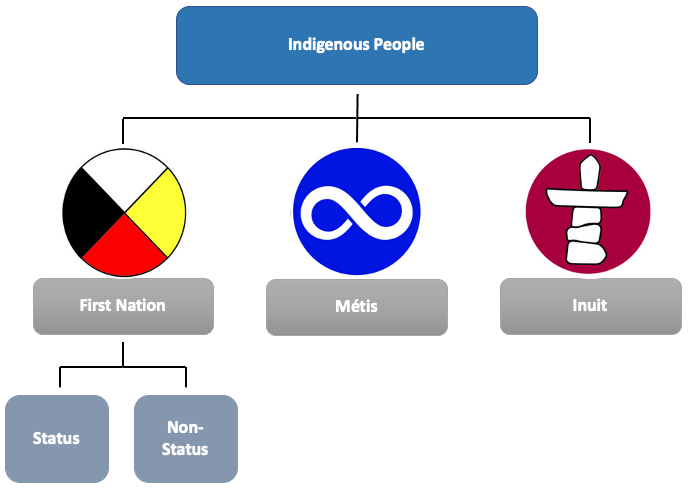6 Lesson One: Terminology
The term “Indigenous people” refers to the original people of North America and their descendants.
Under the term Indigenous people, Canada recognizes three groups:
- Inuit,
- Métis,
- First Nations.
Inuit:
- Inuit people live predominantly in Canada’s northern regions of Canada, with a large portion of their homelands in the Arctic regions, including land, water, and ice.
- There are 53 Inuit communities across the northern regions of Canada.
Métis:
- Métis are of mixed European and Indigenous ancestry who primarily reside in Ontario and the Prairie provinces.
First Nations:
- First Nations people were the original inhabitants of the land now Canada and often occupy territories south of the Arctic.
- There are 634 First Nations communities in Canada, representing more than 50 Nations and 50 Indigenous languages.
Through the Indian Act (lesson three), First Nation people are further divided into two categories:
- Non-status Indians,
- Status Indian (names are added to the Indian Register- no register for Métis or Inuit).

Did you know?
- Indian is a term that is now considered outdated and offensive, but it is still used in legal contexts (example: Indian Act).
- The term Indian came from confusion when Europeans arrived in present-day Canada and thought they had landed in what is present-day India.
